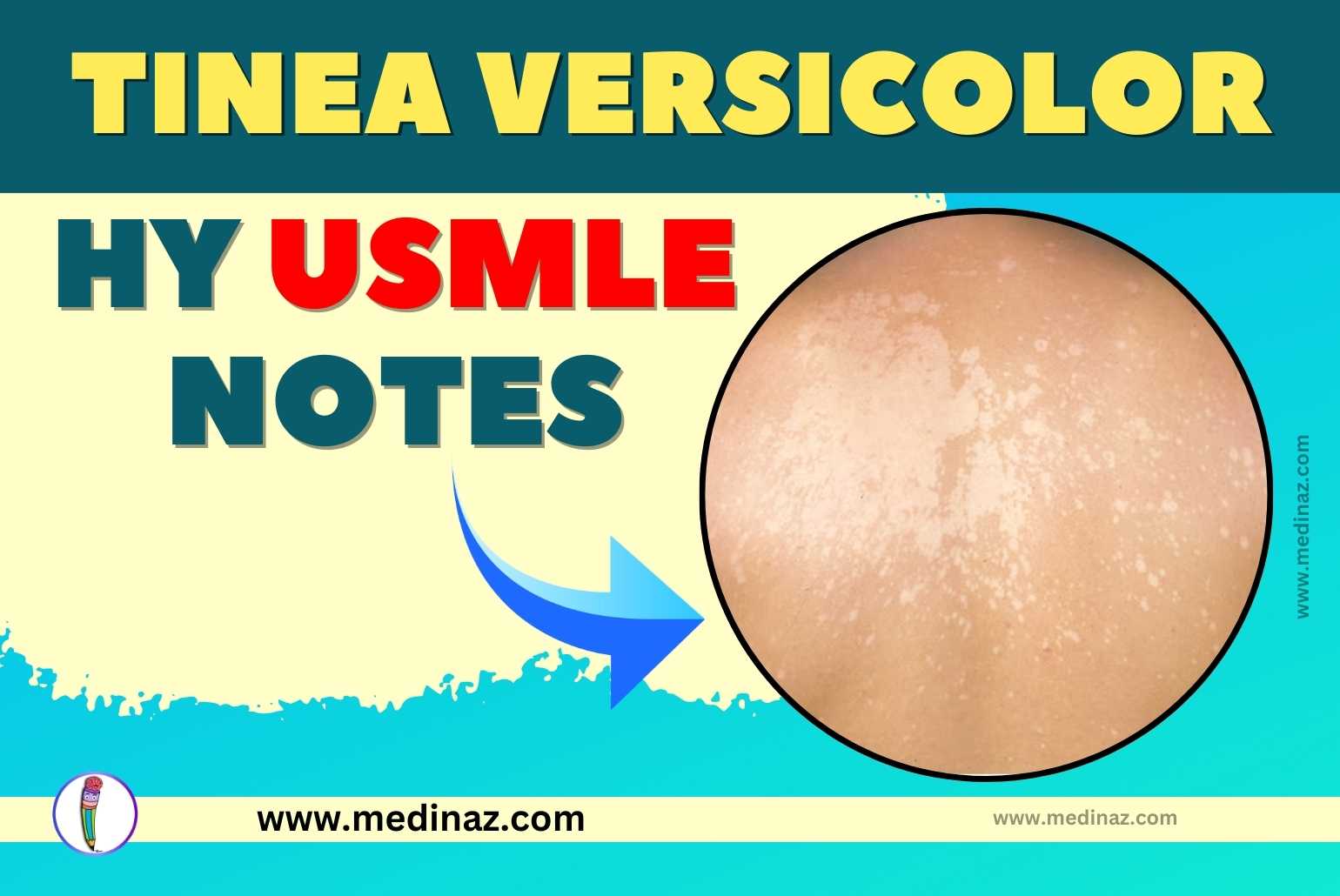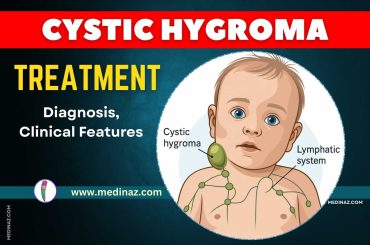Tinea Versicolor USMLE Notes & Mnemonics contains all the high-yield points you need to know.
- Pityriasis Versicolor: A common fungal skin infection caused by the yeast Malassezia spp., characterized by hypo- or hyperpigmented, scaly patches.
Epidemiology:
- More common in warm, humid environments. (Ref)
- Frequently affects adolescents and young adults.
Pathophysiology:
- Overgrowth of the Malassezia yeast on the skin, disrupting normal pigmentation.
Clinical Features of Tinea Versicolor (Pityriasis Versicolor):
- Patches on Skin: Often on the trunk and upper arms.
- Hypo- or Hyperpigmented: Varies with skin tone and sun exposure.
- Fine Scale: Noted on the surface of the lesions.
- Asymptomatic: Rarely itchy or symptomatic.
- Recurrence: Common, especially in warm, humid conditions.
Diagnosis:
- Clinical Appearance: Characteristic look of lesions.
- Wood’s Lamp Examination: Shows yellow-green fluorescence.
- KOH (Potassium Hydroxide) Prep: “Spaghetti and meatballs” appearance under the microscope.
Treatment:
- Topical Antifungals: Selenium sulfide, ketoconazole, or zinc pyrithione shampoos; terbinafine, clotrimazole, or miconazole creams.
- Systemic Antifungals: Itraconazole or fluconazole for extensive or recurrent cases.
Prevention:
- Avoiding excessive sweating, tight clothing.
- Regular use of antifungal shampoos in endemic areas.
Mnemonic: “PITY Versicolor”
- Patches (hypo- or hyperpigmented)
- Itchy (rarely)
- Trunk and upper arms
- Yeast (Malassezia)
- Various colors
- Environmental (warm, humid)
- Recurrent
- Scale (fine)
- Identification (Wood’s lamp, KOH prep)
- Control (antifungals)
- Overgrowth of yeast
- Lesions (distinct)
Chart: Pityriasis Versicolor Diagnosis and Treatment
| Diagnostic Tool | Finding | Treatment Option |
|---|---|---|
| Clinical Appearance | Hypo-/hyperpigmented patches | Topical Antifungals |
| Wood’s Lamp Examination | Yellow-green fluorescence | |
| KOH Prep | “Spaghetti and meatballs” appearance | Systemic Antifungals (for extensive cases) |
Note: For the USMLE, focus on recognizing the clinical appearance of Pityriasis Versicolor, its association with Malassezia, and the treatment options. The condition is benign but can be a cosmetic concern for patients, and its recurrence is common. Understanding the “spaghetti and meatballs” appearance on KOH prep can be a key test point.
Check other important USMLE Notes
A Visual Learning Platform





